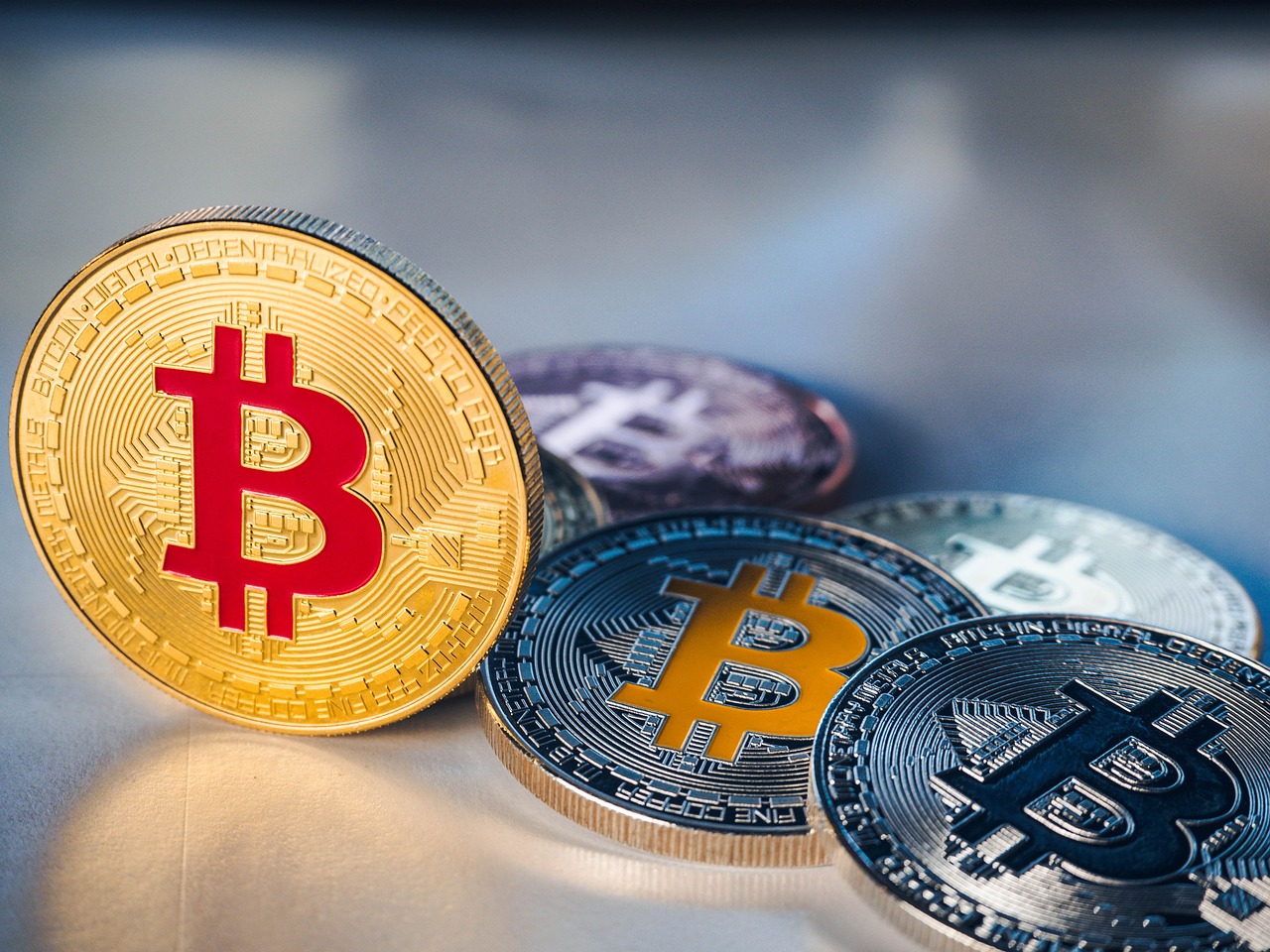Evaluating the Future of Market Regulations in Crypto
As we plunge deeper into the digital age, the world of cryptocurrency is undergoing a seismic shift, one that raises critical questions about how we govern these decentralized assets. The landscape of crypto regulations is evolving rapidly, and it’s essential to understand how these changes will impact investors, market stability, and the broader financial ecosystem. With the rise of cryptocurrencies, we find ourselves at a crossroads where the need for regulation is becoming increasingly apparent, yet the path forward is fraught with complexities. Are we ready to embrace a future where regulations not only protect investors but also foster innovation? Let’s dive into this intriguing topic!
Currently, the regulatory environment for cryptocurrencies varies significantly across the globe. Some countries have embraced digital currencies, creating frameworks that facilitate their use, while others have taken a more cautious approach, imposing strict regulations or outright bans. For instance, nations like El Salvador have recognized Bitcoin as legal tender, sparking a wave of interest and adoption, while countries like China have cracked down on crypto activities, citing concerns over financial stability and fraud.
This patchwork of regulations creates a complex landscape for investors and businesses alike. The differences can be stark, with some jurisdictions offering clear guidelines and support, while others leave participants in a fog of uncertainty. To illustrate this, consider the following table that highlights key regulatory stances from various countries:
| Country | Regulatory Approach | Key Features |
|---|---|---|
| United States | Mixed | State-specific regulations; SEC oversight |
| European Union | Developing | Proposed MiCA legislation; focus on consumer protection |
| China | Restrictive | Ban on mining and trading; strict enforcement |
| El Salvador | Supportive | Bitcoin as legal tender; government-backed initiatives |
Regulating cryptocurrencies is no walk in the park. One of the most significant hurdles regulators face is the inherent decentralization of these digital assets. Unlike traditional financial systems, where central authorities can enforce rules and regulations, cryptocurrencies operate on a peer-to-peer network that can be challenging to monitor and control. This decentralized nature not only complicates enforcement but also raises questions about accountability and jurisdiction.
Moreover, the rapid pace of technological innovation in the crypto space means that regulations can quickly become outdated. Just think about it: by the time a regulatory framework is established, new technologies like DeFi (Decentralized Finance) and smart contracts could already be revolutionizing the landscape. Regulators must be agile, adapting to these changes while ensuring that they do not stifle innovation.
Interestingly, technology itself might hold the key to effective regulation. Advancements in blockchain technology can enhance transparency and traceability, making it easier for regulators to monitor transactions and ensure compliance. Imagine a world where every transaction is recorded on an immutable ledger, providing regulators with real-time insights into market activities. This could significantly reduce fraud and increase investor confidence.
Smart contracts, which are self-executing contracts with the terms of the agreement directly written into code, could be a game changer in the regulatory landscape. They have the potential to automate compliance processes, reducing the burden on businesses and regulators alike. For example, a smart contract could automatically enforce regulatory requirements, ensuring that all parties adhere to the rules without the need for extensive oversight.
On the flip side, the rise of DeFi presents unique challenges for regulators. Traditional regulatory frameworks may struggle to address the complexities of decentralized platforms that operate without intermediaries. How do you enforce consumer protection when there’s no central authority? This question looms large as DeFi continues to grow, pushing the boundaries of what we consider financial services.
As we look to the future, it’s essential to analyze emerging trends in cryptocurrency regulation across different countries. A growing number of nations are recognizing the need for a balanced approach that fosters innovation while protecting consumers. This trend could lead to increased international cooperation, as countries work together to establish common standards and regulatory practices.
So, what does all this mean for market stability? Regulatory measures can significantly enhance or hinder stability in the crypto market. On one hand, clear regulations can boost investor confidence, leading to increased participation and investment. On the other hand, overly restrictive measures could drive innovation underground, resulting in volatility and uncertainty.
At the heart of effective regulation lies the need for investor protection. Strong regulatory frameworks can safeguard against fraud and market manipulation, ensuring that investors can participate in the market with confidence. In a space as volatile as cryptocurrency, the importance of these measures cannot be overstated.
Looking ahead, we can speculate on several potential developments in crypto regulations. The role of international cooperation will likely become more pronounced, as countries recognize the global nature of cryptocurrencies. Additionally, public sentiment will play a critical role in shaping policy decisions, as regulators respond to the demands and concerns of their constituents.
- What are the main challenges in regulating cryptocurrencies? The decentralized nature of cryptocurrencies and the rapid pace of technological innovation present significant challenges for regulators.
- How can technology aid in regulation? Advancements in blockchain technology can enhance transparency and traceability, making it easier for regulators to monitor transactions.
- What is the future of crypto regulations? We can expect increased international cooperation and a focus on investor protection as the regulatory landscape continues to evolve.

The Current State of Crypto Regulations
As we dive into the world of cryptocurrency, it's essential to understand the current landscape of regulations that govern this dynamic market. Across the globe, different countries have adopted various approaches to regulating cryptocurrencies, reflecting their unique economic environments, cultural attitudes towards technology, and levels of market maturity. For instance, while some nations embrace cryptocurrencies with open arms, others impose strict bans or heavy restrictions. This patchwork of regulations can be confusing for investors and businesses alike.
In the United States, the regulatory framework is still evolving. The SEC (Securities and Exchange Commission) is primarily focused on ensuring that cryptocurrencies are not used for fraudulent activities, while the CFTC (Commodity Futures Trading Commission) views certain cryptocurrencies as commodities. This dual approach can create uncertainty, as businesses often struggle to determine which regulations apply to them. On the other hand, countries like El Salvador have taken a bold step by officially adopting Bitcoin as legal tender, showcasing a radically different stance that prioritizes innovation over regulation.
In Europe, the EU's MiCA (Markets in Crypto-Assets) regulation is set to establish a comprehensive regulatory framework for cryptocurrencies. This initiative aims to create a unified approach across member states, which could simplify compliance for businesses operating in multiple countries. However, the implementation of such regulations will require careful consideration to balance innovation and consumer protection.
Meanwhile, in Asia, countries like China have taken a hardline stance against cryptocurrency trading, citing concerns over financial stability and fraud. This has led to a significant exodus of crypto businesses from the region, raising questions about the long-term viability of such strict regulations. Conversely, nations like Singapore have embraced a more favorable regulatory environment, encouraging crypto startups to flourish while ensuring that adequate consumer protections are in place.
It's clear that the current state of crypto regulations is a mixed bag, with some jurisdictions fostering innovation and others stifling it. This inconsistency not only impacts businesses but also affects investors' confidence. As the market continues to evolve, the need for a cohesive and adaptable regulatory framework becomes increasingly apparent. Understanding these regulations is crucial for anyone looking to navigate the complex world of cryptocurrency.
As we look ahead, it's vital to keep an eye on how these regulations develop and adapt to the rapid changes in technology and market dynamics. The interplay between regulation and innovation will shape the future of the crypto landscape, influencing everything from investor confidence to the stability of the market itself.
- What are the main regulatory bodies overseeing cryptocurrencies? The SEC and CFTC in the U.S., along with various international bodies, play significant roles in cryptocurrency regulation.
- How do regulations differ across countries? Some countries embrace cryptocurrencies, while others impose strict bans or regulations, leading to a diverse regulatory landscape.
- What is MiCA, and why is it important? MiCA stands for Markets in Crypto-Assets, a proposed EU regulation aimed at creating a unified regulatory framework for cryptocurrencies.

Challenges in Regulating Cryptocurrencies
As the cryptocurrency landscape continues to evolve at breakneck speed, regulators around the world find themselves grappling with a myriad of challenges. One of the most significant hurdles is the decentralized nature of cryptocurrencies. Unlike traditional financial systems that are centralized and governed by a single authority, cryptocurrencies operate on a peer-to-peer network, making it incredibly difficult for regulators to impose rules and enforce compliance. This decentralization creates a situation where accountability is often blurred, leading to questions about who is responsible when things go awry.
Moreover, the rapid pace of technological innovation in the crypto space adds another layer of complexity. Just when regulators think they have a handle on one aspect of the market, a new technology or trend emerges, rendering existing regulations obsolete. For instance, the rise of Decentralized Finance (DeFi) platforms has introduced a whole new set of challenges. These platforms allow users to engage in financial transactions without intermediaries, which makes it nearly impossible for regulators to monitor activities effectively. The traditional regulatory frameworks that worked for conventional finance simply cannot keep up.
To illustrate the challenges faced by regulators, consider the following table that outlines some of the key issues:
| Challenge | Description |
|---|---|
| Decentralization | Difficulty in assigning accountability and enforcing regulations. |
| Technological Innovation | Rapid advancements that outpace regulatory frameworks. |
| Global Nature | Cross-border transactions complicate jurisdiction and enforcement. |
| Market Volatility | Extreme price fluctuations challenge investor protection measures. |
Additionally, the global nature of cryptocurrencies presents another significant challenge. Unlike traditional assets that are often confined to specific jurisdictions, cryptocurrencies can be traded across borders in an instant. This creates a regulatory nightmare where different countries have varying rules, leading to a patchwork of regulations that can confuse both investors and businesses. A crypto asset that is deemed legal in one country might be illegal in another, making it difficult for companies to navigate the landscape.
Finally, the issue of market volatility cannot be overlooked. The crypto market is notoriously unstable, with prices capable of swinging wildly in a matter of hours. This volatility poses risks not only to investors but also to the broader financial ecosystem. Regulators are often caught in a tricky position, as they must balance the need for innovation and growth with the imperative to protect investors and maintain market stability. The question remains: how can they achieve this delicate balance?
In conclusion, the challenges in regulating cryptocurrencies are multifaceted and require a nuanced approach. As the market continues to grow and evolve, so too must the regulatory frameworks that govern it. It’s a high-stakes game where the rules are still being written, and the outcome is uncertain. As we look to the future, the need for collaboration between regulators, industry stakeholders, and the crypto community has never been more critical.
- What are the primary challenges in regulating cryptocurrencies? The primary challenges include decentralization, rapid technological innovation, global jurisdiction issues, and market volatility.
- How does decentralization affect regulation? Decentralization makes it difficult to assign accountability and enforce regulations since there is no single governing body.
- Why is technological innovation a challenge for regulators? Technological advancements can outpace existing regulatory frameworks, making them obsolete or ineffective.
- What role does global jurisdiction play in cryptocurrency regulation? The global nature of cryptocurrencies complicates enforcement, as different countries have varying regulations.

The Role of Technology in Regulation
The world of cryptocurrency is like a wild frontier, full of opportunities and dangers lurking around every corner. As this digital landscape evolves, the role of technology in regulation becomes increasingly crucial. Imagine a world where regulations are not just rules set by authorities but are seamlessly integrated into the very fabric of the blockchain. This integration can enhance transparency, accountability, and security, making it easier for both regulators and participants to navigate this complex ecosystem.
One of the most promising technologies in this space is blockchain itself. This decentralized ledger technology offers a transparent and immutable record of all transactions. Regulators can leverage this transparency to monitor activities in real-time, reducing the chances of fraud and manipulation. For instance, if a suspicious transaction occurs, regulators can trace it back through the blockchain to identify the parties involved. This level of oversight could dramatically change how we think about compliance and enforcement in the cryptocurrency market.
Furthermore, the advent of artificial intelligence (AI) and machine learning algorithms can revolutionize regulatory practices. These technologies can analyze vast amounts of data quickly, identifying patterns and anomalies that may indicate illicit activities. By employing AI, regulators can enhance their ability to detect fraud and market manipulation more effectively than ever before. Imagine a system that can alert authorities in real-time about potential risks, allowing for swift action to protect investors and maintain market stability.
Another exciting development is the use of smart contracts. These self-executing contracts with the terms of the agreement directly written into code can automate compliance processes. For example, a smart contract could automatically ensure that a transaction complies with regulatory requirements before it is executed. This could significantly reduce the burden on businesses, as they wouldn't need to navigate complex regulatory frameworks manually. Instead, the technology would handle compliance, allowing companies to focus on innovation and growth.
However, while technology offers numerous benefits, it also presents challenges. The rapid pace of technological change can leave regulators scrambling to keep up. As new innovations emerge, existing regulations may become outdated, creating gaps that could be exploited. This is why it’s essential for regulators to adopt a proactive approach, continuously updating their frameworks to accommodate new technologies. Collaboration between tech developers and regulatory bodies is vital to ensure that regulations are not only effective but also adaptable to future developments.
In conclusion, the role of technology in the regulation of cryptocurrencies is pivotal. By harnessing the power of blockchain, AI, and smart contracts, regulators can create a more transparent, efficient, and secure environment for all market participants. However, this journey requires continuous dialogue and collaboration between the tech world and regulatory authorities. As we look toward the future, it’s clear that technology will not just support regulation; it will redefine it.
- How does blockchain improve regulatory oversight?
Blockchain provides a transparent and immutable record of transactions, allowing regulators to monitor activities in real-time. - What role does AI play in cryptocurrency regulation?
AI can analyze large datasets to identify patterns and anomalies, enhancing the ability to detect fraud and market manipulation. - What are smart contracts, and how do they aid compliance?
Smart contracts are self-executing contracts that can automate compliance processes, ensuring regulatory requirements are met without manual intervention. - Why is collaboration between tech developers and regulators important?
Collaboration ensures that regulations remain effective and adaptable to the rapid pace of technological change in the crypto space.

Smart Contracts and Compliance
In the ever-evolving landscape of cryptocurrencies, smart contracts are emerging as a pivotal tool that can significantly enhance compliance with regulatory frameworks. But what exactly are smart contracts? Think of them as self-executing contracts with the terms of the agreement directly written into code. They operate on blockchain technology, ensuring transparency and immutability. This means that once a smart contract is deployed, it cannot be altered, which provides a level of security that traditional contracts often lack.
One of the most compelling advantages of smart contracts is their ability to automate compliance processes. Imagine a world where compliance checks are conducted in real-time, without the need for extensive manual oversight. Smart contracts can facilitate this by embedding regulatory requirements directly into the contract's code. For example, a smart contract could automatically verify that a transaction complies with anti-money laundering (AML) regulations before it is executed. This not only streamlines the process but also reduces the burden on both businesses and regulatory bodies.
However, the integration of smart contracts into the regulatory landscape is not without its challenges. Regulators must grapple with the question of how to enforce compliance when the technology operates in a decentralized manner. Unlike traditional financial systems, where a central authority can intervene, the decentralized nature of blockchain means that enforcement becomes more complex. This raises important questions about accountability and oversight.
Moreover, while smart contracts can enhance compliance, they also require a robust framework to ensure that the code is written correctly and adheres to regulatory standards. Inaccuracies in the code can lead to unintended consequences, potentially exposing businesses to legal risks. Therefore, it is crucial for developers to work closely with legal experts to ensure that smart contracts are not only technically sound but also compliant with existing regulations.
To illustrate the potential benefits of smart contracts in compliance, consider the following table that outlines key features and their implications:
| Feature | Implication for Compliance |
|---|---|
| Self-executing | Reduces human error and increases efficiency in compliance checks. |
| Immutable | Enhances trust and transparency, making audits easier and more reliable. |
| Automated verification | Ensures real-time compliance with regulations, minimizing the risk of violations. |
In conclusion, while smart contracts hold immense potential for enhancing compliance in the cryptocurrency space, their successful implementation requires a collaborative effort between technologists and regulators. As the regulatory landscape continues to evolve, it will be fascinating to see how these technologies can be harnessed to create a more secure and compliant financial ecosystem.
- What are smart contracts? Smart contracts are self-executing contracts with the terms directly written into code, operating on blockchain technology.
- How do smart contracts enhance compliance? They automate compliance processes and embed regulatory requirements directly into the contract's code.
- What challenges do regulators face with smart contracts? The decentralized nature of blockchain complicates enforcement and raises questions about accountability.
- Can smart contracts be modified after deployment? No, once deployed, smart contracts cannot be altered, which ensures security but also requires careful coding.

Decentralized Finance (DeFi) Implications
Decentralized Finance, commonly known as DeFi, is transforming the financial landscape in ways that are both exciting and challenging. At its core, DeFi aims to recreate traditional financial systems—like lending, borrowing, and trading—using blockchain technology. This shift is not just a technological marvel; it poses significant implications for regulatory frameworks worldwide. One of the most striking features of DeFi is its decentralized nature, which allows users to interact directly without intermediaries. While this fosters innovation and inclusivity, it also raises critical questions about oversight and consumer protection.
As DeFi platforms gain traction, regulators face the daunting task of adapting existing frameworks to accommodate these new models. Traditional financial regulations were designed with centralized institutions in mind, making them ill-equipped to handle the unique characteristics of DeFi. For instance, the absence of a central authority complicates accountability. If a DeFi platform collapses or is hacked, who is responsible? This ambiguity can lead to a lack of trust among users, potentially stifling growth in this burgeoning sector.
Moreover, the rapid pace of innovation in DeFi creates a regulatory lag. By the time regulators develop a framework for one aspect of DeFi, the industry may have already evolved to a point where those regulations are outdated. This is akin to chasing a moving target; the faster regulators try to catch up, the faster DeFi continues to innovate. Therefore, a flexible and adaptive regulatory approach is essential to ensure that regulations are relevant and effective.
Another critical aspect of DeFi is the potential for financial inclusion. DeFi platforms can provide access to financial services for individuals who are unbanked or underbanked, particularly in developing countries. This democratization of finance is a double-edged sword, however. While it empowers users, it also raises concerns about the risks involved. Without adequate regulatory frameworks, users may fall victim to scams or exploitative lending practices, further emphasizing the need for effective oversight.
Furthermore, the rise of DeFi has profound implications for traditional financial institutions. These entities must adapt to a landscape where peer-to-peer transactions and automated protocols challenge their conventional business models. This shift could lead to a re-evaluation of the roles that banks and financial intermediaries play in the economy. If DeFi continues to grow, we may witness a significant transformation in how financial services are delivered and consumed.
In light of these complexities, regulators must engage in a dialogue with DeFi developers and users to craft regulations that are not only effective but also promote innovation. Establishing a collaborative approach can help bridge the gap between regulation and innovation, ensuring that the DeFi ecosystem can thrive while maintaining essential consumer protections.
To summarize, the implications of DeFi for regulatory frameworks are vast and multifaceted. As we navigate this new financial frontier, it is crucial to strike a balance between fostering innovation and ensuring that users are adequately protected. The future of DeFi will undoubtedly influence how regulations are shaped, making it a pivotal area of focus for both regulators and industry participants.
- What is DeFi? DeFi, or Decentralized Finance, refers to financial services that use blockchain technology to operate without intermediaries.
- How does DeFi impact traditional finance? DeFi challenges traditional financial models by enabling peer-to-peer transactions and reducing reliance on banks and other intermediaries.
- What are the risks associated with DeFi? Risks include lack of regulation, potential scams, and the volatility of cryptocurrencies used in DeFi transactions.
- Can DeFi promote financial inclusion? Yes, DeFi can provide access to financial services for individuals who are unbanked or underbanked, especially in developing countries.
- How should regulators approach DeFi? Regulators should adopt a flexible and adaptive approach, engaging with DeFi developers to create effective regulations that also encourage innovation.

Global Regulatory Trends
The world of cryptocurrency is like a wild west, filled with opportunity but also fraught with uncertainty. As the digital currency landscape continues to evolve, are emerging that seek to bring some order to this chaotic frontier. Different countries are taking varied approaches to regulation, and understanding these trends is crucial for anyone involved in the crypto market. From the United States to Europe and Asia, regulators are grappling with how to balance innovation with consumer protection.
In the United States, the regulatory environment has been somewhat fragmented. The SEC (Securities and Exchange Commission) and the CFTC (Commodity Futures Trading Commission) have been at the forefront, each claiming jurisdiction over different aspects of the cryptocurrency market. This has led to a patchwork of regulations that can confuse investors and businesses alike. For instance, while Bitcoin is often treated as a commodity, many altcoins are classified as securities, subjecting them to stricter regulations. This inconsistency can stifle innovation, as companies may hesitate to enter the market for fear of running afoul of regulatory bodies.
Across the Atlantic, the European Union is moving toward a more unified regulatory framework. The Markets in Crypto-Assets (MiCA) regulation aims to create a comprehensive legal framework for digital assets, which could standardize rules across member states. This is a significant step forward, as it not only aims to protect investors but also fosters a more predictable environment for businesses. By establishing clear regulations, the EU hopes to attract crypto firms and bolster its position as a global leader in the digital economy.
Meanwhile, in Asia, countries like China have taken a more aggressive stance against cryptocurrencies, implementing outright bans on trading and Initial Coin Offerings (ICOs). This has led to a migration of crypto businesses to more favorable jurisdictions, such as Singapore, which is known for its progressive regulatory stance. Singapore has introduced a licensing regime that encourages innovation while ensuring consumer protection. This trend of regulatory arbitrage is becoming increasingly common, as businesses seek out environments that support their growth.
Interestingly, there is also a growing trend towards international cooperation among regulatory bodies. Organizations like the Financial Action Task Force (FATF) are working to create global standards for cryptocurrency regulation, focusing on anti-money laundering (AML) and combating the financing of terrorism (CFT). This international approach could help harmonize regulations, making it easier for businesses to operate across borders. However, achieving consensus among countries with differing priorities and economic interests is no small feat.
As we look to the future, it's clear that regulatory trends will continue to evolve. The challenge will be to strike the right balance between fostering innovation and protecting consumers. Countries that can successfully navigate this landscape will likely position themselves as leaders in the burgeoning crypto economy. For investors, understanding these trends is crucial, as they can have a profound impact on market dynamics.
In summary, the global regulatory landscape for cryptocurrencies is in flux, with various countries adopting different approaches. From the fragmented regulations in the U.S. to the unified efforts in the EU and the restrictive measures in China, the implications for investors and businesses are significant. Staying informed about these trends is essential for anyone looking to navigate the exciting yet unpredictable world of cryptocurrency.
- What are the main regulatory bodies overseeing cryptocurrencies?
The main regulatory bodies vary by country, but in the U.S., the SEC and CFTC play significant roles. In the EU, MiCA is a key regulatory framework.
- How do regulations affect cryptocurrency investments?
Regulations can influence market stability, investor confidence, and the overall growth of the crypto ecosystem.
- What is the role of international cooperation in crypto regulation?
International cooperation aims to create standardized regulations that can help prevent fraud and promote a safer investing environment.

The Impact of Regulation on Market Stability
When it comes to the world of cryptocurrencies, regulation can be a double-edged sword. On one side, effective regulations can enhance market stability, while on the other, overly stringent rules can stifle innovation and lead to heightened volatility. So, how do regulations truly affect the crypto market? Let's dive into this intricate relationship.
First, it’s essential to understand that regulations can significantly influence investor confidence. When investors perceive that a market is well-regulated, they are more likely to invest their hard-earned money. This influx of capital can lead to increased liquidity and a more stable market. For instance, in regions where regulatory frameworks are clear and enforced, we often see a more robust participation from institutional investors. These entities typically bring larger sums of money and a longer-term investment perspective, both of which contribute to a more stable market environment.
However, the flip side is equally important to consider. Overregulation can lead to a flight of capital to less regulated markets. If businesses and investors feel that the regulatory environment is too restrictive, they may seek opportunities in jurisdictions with more favorable conditions. This can create a ripple effect, leading to diminished market activity in heavily regulated areas, which can ultimately destabilize local markets. For example, if a country imposes heavy taxes or stringent compliance requirements on crypto exchanges, those exchanges might relocate to more lenient countries, taking their liquidity and innovation with them.
Moreover, regulations can also play a pivotal role in preventing fraud and market manipulation. By establishing clear rules and oversight mechanisms, regulators can help protect investors from scams and unethical practices that have plagued the crypto space. This protective layer can foster a safer environment for new investors, encouraging them to enter the market without fear of being taken advantage of. A well-regulated market can also deter bad actors, creating a healthier ecosystem for everyone involved.
To illustrate the impact of regulation on market stability, let’s look at a few examples:
| Country | Regulatory Approach | Market Stability |
|---|---|---|
| United States | Mixed; state and federal regulations | Moderate stability, high investor confidence |
| China | Strict bans on crypto trading | High volatility, capital flight |
| Switzerland | Clear and supportive regulations | High stability, thriving crypto ecosystem |
As shown in the table, countries with supportive regulations, like Switzerland, tend to enjoy a more stable market environment compared to those with strict bans, like China. This highlights the importance of finding a balance in regulatory measures that protect investors while still promoting innovation.
In conclusion, the impact of regulation on market stability in the cryptocurrency world is profound and multifaceted. While regulations can enhance investor confidence and protect against fraud, they can also lead to capital flight and reduced market activity if not implemented thoughtfully. Striking the right balance is crucial for fostering a healthy crypto ecosystem that benefits everyone involved.
- How do regulations affect cryptocurrency prices? Regulations can either boost or lower prices depending on how they influence investor confidence and market participation.
- Can regulations prevent market manipulation? Yes, effective regulations can help deter fraud and manipulation, creating a safer environment for investors.
- What happens if a country bans cryptocurrencies? A ban can lead to increased volatility and capital flight, as investors and businesses seek more favorable environments.

Investor Protection Measures
When it comes to the world of cryptocurrencies, investor protection is a hot topic that can't be ignored. With the rapid rise in popularity of digital currencies, the potential for fraud and market manipulation has also increased significantly. Imagine diving into a pool of opportunities, only to find that the water is murky with risks. This is where robust regulatory frameworks come into play, acting as lifeguards to ensure that investors can swim safely without fear of drowning in scams.
Effective regulations are crucial for creating a safe environment for investors. They can provide clear guidelines on what constitutes acceptable behavior in the crypto market, thereby reducing the chances of fraudulent activities. For instance, regulations can mandate transparency from cryptocurrency exchanges, requiring them to disclose their operational practices and financial health. This transparency acts like a beacon, guiding investors away from shady dealings.
Another vital aspect of investor protection is the establishment of insurance mechanisms. Just as traditional banks insure deposits, similar models can be developed for cryptocurrency exchanges. This would mean that if an exchange were to fail or be hacked, investors could recover a portion of their lost funds. Such safety nets can significantly boost investor confidence, encouraging more people to participate in the crypto market without the nagging worry of losing everything overnight.
Moreover, regulatory bodies can introduce educational initiatives aimed at informing investors about the risks associated with cryptocurrencies. Knowledge is power, and by equipping investors with the right information, they can make informed decisions. Think of it as providing a map to navigate through a dense forest. Without guidance, one might easily get lost, but with the right tools, they can find their way safely.
To further enhance investor protection, regulators can consider establishing a whistleblower program. This would allow individuals to report fraudulent activities without fear of retaliation. Such programs can act as a deterrent for bad actors, knowing that there are eyes watching and that their misdeeds could be exposed. It's like having a neighborhood watch that keeps the community safe.
However, while the need for investor protection is clear, it’s essential to strike a balance. Overregulation could stifle innovation in the crypto space, potentially driving developers and investors away. Therefore, regulatory measures should be designed to protect without hindering growth. This delicate balance is akin to walking a tightrope; too much weight on one side can lead to a fall, while too little may not provide the necessary support.
In conclusion, the landscape of cryptocurrency is evolving, and with it, the need for effective investor protection measures. By implementing transparent practices, insurance options, educational initiatives, and whistleblower programs, regulators can create a safer environment for all. It's about fostering trust and confidence, allowing investors to dive into the crypto pool without fear of the depths below.
- What are the main investor protection measures in crypto?
Investor protection measures include transparency requirements for exchanges, insurance mechanisms for funds, educational initiatives to inform investors about risks, and whistleblower programs to report fraud.
- How can regulations impact investor confidence?
Clear regulations can enhance investor confidence by providing a sense of security, reducing the fear of fraud, and ensuring that there are mechanisms in place to recover lost funds.
- What is the role of education in investor protection?
Education empowers investors with knowledge about the risks associated with cryptocurrencies, enabling them to make informed decisions and avoid potential pitfalls.

Future Regulatory Developments
As we peer into the crystal ball of cryptocurrency regulations, it’s clear that the landscape is poised for significant transformation. The future of regulatory frameworks will likely be shaped by a confluence of factors, including technological advancements, evolving market dynamics, and shifting public sentiment. One of the most intriguing aspects is the potential for international cooperation. As cryptocurrencies transcend borders, countries may find it increasingly beneficial to collaborate on regulatory standards to create a more cohesive global framework. Imagine a world where a unified regulatory approach reduces the risk of regulatory arbitrage, fostering a healthier market environment for all participants.
Moreover, the role of public sentiment cannot be overstated. As more individuals engage with cryptocurrencies, their voices will inevitably influence policymakers. We might witness a surge in grassroots movements advocating for stronger consumer protection measures, pushing regulators to prioritize the safety of everyday investors. This could lead to regulations that not only protect consumers but also encourage innovation within the crypto space. After all, a well-regulated market can be a breeding ground for new ideas and technologies.
Another exciting development on the horizon is the integration of artificial intelligence (AI) into regulatory practices. AI can analyze vast amounts of data at lightning speed, allowing regulators to identify suspicious activities and trends that may signal fraud or manipulation. This tech-driven approach could enhance compliance monitoring and streamline the regulatory process, making it less burdensome for businesses while ensuring robust oversight.
Furthermore, the rise of Decentralized Autonomous Organizations (DAOs) presents a unique challenge for regulators. DAOs operate on blockchain technology and are governed by smart contracts, which can complicate the traditional regulatory framework. As these organizations gain popularity, regulators will need to devise innovative strategies to oversee them without stifling their decentralized nature. This balancing act will be crucial in fostering a thriving ecosystem while ensuring accountability.
In conclusion, the future of cryptocurrency regulations is likely to be dynamic and multifaceted. With the potential for international collaboration, the influence of public opinion, advancements in technology, and the emergence of new organizational structures, we are on the brink of a regulatory evolution. It’s essential for investors, businesses, and regulators alike to stay informed and adaptable in this ever-changing environment. The road ahead may be bumpy, but with thoughtful regulation, we can pave the way for a more stable and secure crypto market.
- What role will international cooperation play in future crypto regulations? International cooperation can help create unified standards that reduce regulatory arbitrage and enhance market stability.
- How might public sentiment influence regulatory decisions? As more people engage with cryptocurrencies, their concerns and experiences could drive regulators to implement stronger consumer protections.
- Will AI be a significant part of future regulatory frameworks? Yes, AI can help regulators analyze data quickly and effectively, improving compliance monitoring and fraud detection.
- What challenges do DAOs present for regulators? DAOs complicate traditional regulatory frameworks, requiring innovative oversight strategies that respect their decentralized nature.
Frequently Asked Questions
- What are the main regulations governing cryptocurrencies today?
Cryptocurrency regulations vary significantly across the globe. In some countries, like the United States, regulations are still evolving, with different states implementing their own rules. Other nations, such as Japan and Switzerland, have more established frameworks that provide clarity for investors and businesses. Overall, regulations typically focus on anti-money laundering (AML), know-your-customer (KYC) requirements, and consumer protection.
- Why is regulating cryptocurrencies so challenging?
The decentralized nature of cryptocurrencies poses a unique challenge for regulators. Unlike traditional financial systems, which have clear authorities, cryptocurrencies operate on a peer-to-peer basis. This can make it difficult to enforce regulations and ensure compliance. Additionally, the rapid pace of technological innovation means that regulations can quickly become outdated, making it essential for regulators to adapt continuously.
- How might technology influence future regulations?
Advancements in technology, particularly in blockchain and smart contracts, could significantly shape regulatory frameworks. For instance, smart contracts can automate compliance processes, making it easier for businesses to adhere to regulations while reducing the burden on regulators. Furthermore, improved tracking and transparency offered by blockchain technology can enhance oversight and consumer protection.
- What is the impact of decentralized finance (DeFi) on regulations?
DeFi presents a new set of challenges for traditional regulatory approaches. Since DeFi operates without intermediaries, it complicates the ability to enforce existing regulations and protect consumers. Regulators are grappling with how to adapt their frameworks to address the unique characteristics of DeFi, which can blur the lines of accountability and oversight.
- How do regulations affect market stability?
Regulatory measures can play a crucial role in enhancing market stability. Clear regulations can build investor confidence, which is vital for a healthy market. Conversely, overly restrictive regulations might hinder innovation and lead to market volatility. Striking the right balance is essential for fostering a stable and trustworthy cryptocurrency ecosystem.
- What measures are in place to protect investors?
Investor protection is a key focus of many regulatory frameworks. Effective regulations aim to safeguard against fraud, market manipulation, and other risks associated with investing in cryptocurrencies. This includes implementing KYC and AML practices, as well as providing clear guidelines on the responsibilities of exchanges and service providers.
- What future developments can we expect in crypto regulations?
Future regulatory developments in the cryptocurrency space are likely to be influenced by international cooperation and public sentiment. As more countries recognize the importance of regulating cryptocurrencies, we may see a push for harmonized regulations that promote innovation while ensuring consumer protection. Additionally, public opinion will play a significant role in shaping policy decisions, as stakeholders advocate for clearer and fairer regulations.



















